L’ascension est lancée, l’énergie est inarrêtable. 🔥
👉 Prochaine étape selon vous : 25$, 30$… ou plus haut ? 👀
#altcoins #JuCoin
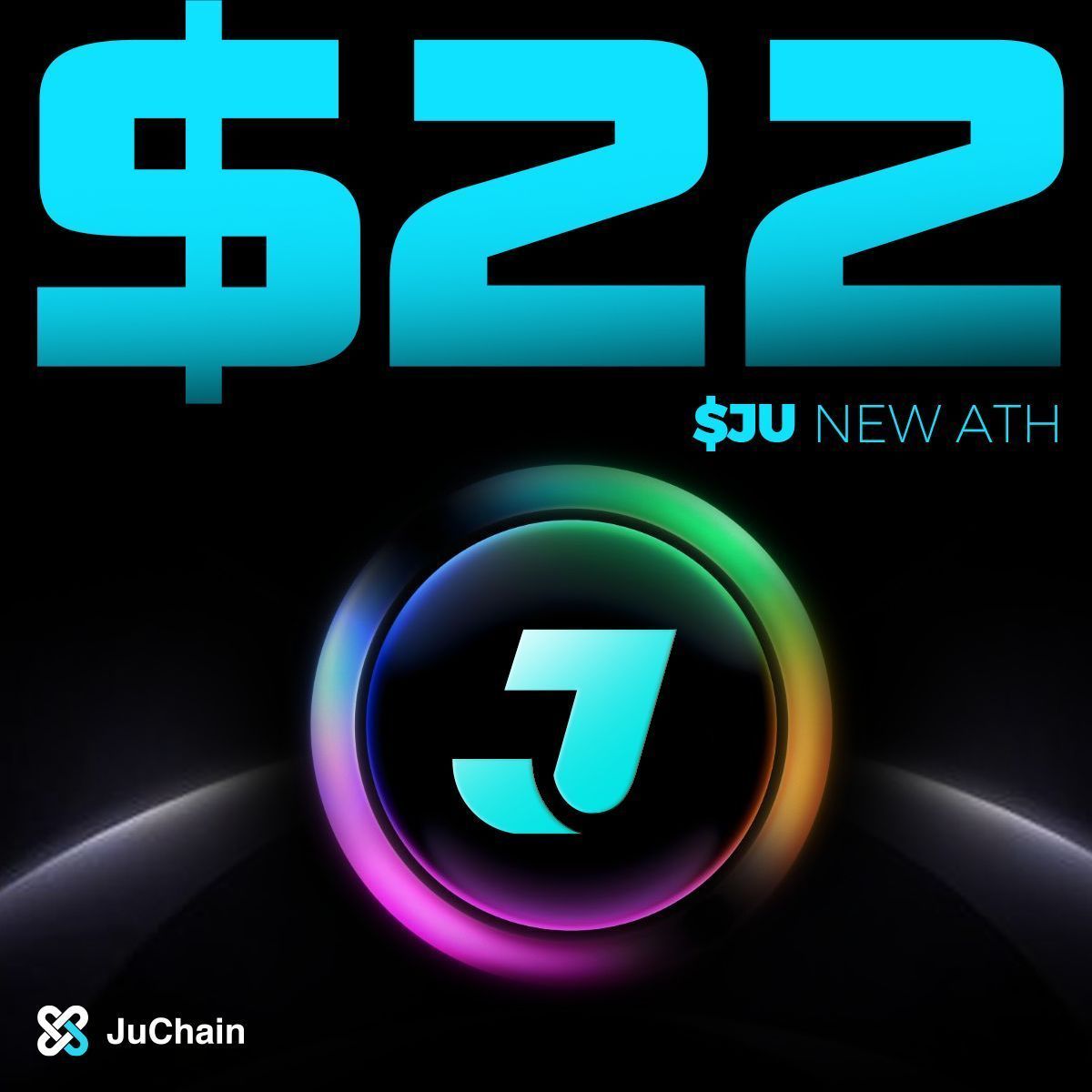


Carmelita
2025-08-30 22:03
$JU vient d’atteindre son ATH à 22$ !
Disclaimer:Contains third-party content. Not financial advice.
See Terms and Conditions.
$SEI/USDT défend le support clé à 0.28 $ après un breakout.
🎯 Objectif haussier : 0.35 $
⚠️ Risque : sous 0.28 → cap sur **0.20 **
📊 Les acheteurs tiennent la ligne… la prochaine impulsion pourrait surprendre.
💬 Prêt pour le prochain move ?
#cryptotrading #altcoins #cryptocurrency #blockchain
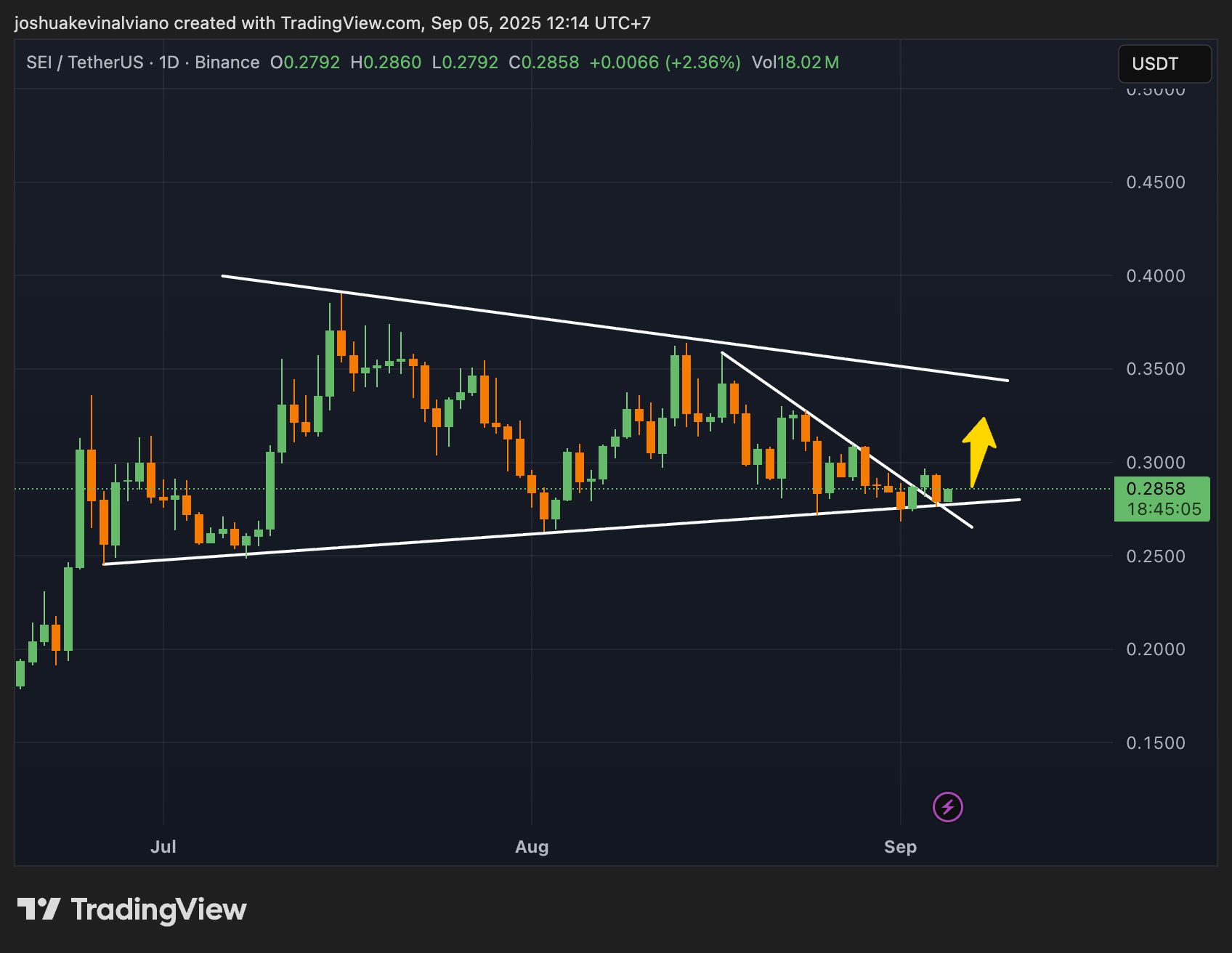


Carmelita
2025-09-05 11:15
🚀 SEI : Bulls Ready to Charge
Disclaimer:Contains third-party content. Not financial advice.
See Terms and Conditions.
While mom, grandma, and the whole family flex Bitcoin, Solana, and ETH 💰🎉, you’re stuck unwrapping Polygon and pretending it’s fine 😅. Bags are bags, right? 🛍️
Check out our YouTube Channel 👉
#altcoins#CryptoComedy #CryptoMeme


Ju.com Media
2025-08-04 09:06
MATIC - Thanks for Nothing, Uncle Bitcoin 😒
Disclaimer:Contains third-party content. Not financial advice.
See Terms and Conditions.
Discover one of the hot coins of 2025! 🚀 Stay ahead in crypto by finding out why traders are watching this breakout project and how you can catch the next move. Don’t miss out — research 🧠, trade smart 📈, and grow with the trend!


Ju.com Media
2025-08-04 09:15
One of the HOT COINS of 2025 🔥
Disclaimer:Contains third-party content. Not financial advice.
See Terms and Conditions.
How Market Trends Influence Altcoin Performance
Understanding how market trends impact altcoins is essential for investors, traders, and enthusiasts navigating the volatile world of cryptocurrencies. Altcoins—any digital currency other than Bitcoin—are particularly sensitive to shifts in broader market conditions. This article explores the key factors that drive altcoin performance, recent developments shaping the landscape, and practical insights into how these trends can influence investment decisions.
The Role of Bitcoin in Shaping Altcoin Markets
Bitcoin remains the dominant force in cryptocurrency markets, often setting the tone for overall sentiment and price movements. When Bitcoin experiences significant gains or declines, it tends to ripple through altcoins due to their high correlation with Bitcoin's price. For instance, on May 22, 2025, Bitcoin hit a record high of $111,878 driven by institutional demand via ETFs. Such surges typically boost investor confidence across the crypto space and lift prices of many altcoins.
Conversely, resistance levels around $106,000 have been observed recently as Bitcoin struggles to break higher. These resistance points can act as psychological barriers that influence trader behavior not only for Bitcoin but also for alternative cryptocurrencies.
This interconnectedness underscores why monitoring Bitcoin’s performance is crucial when assessing potential movements within altcoin markets. A strong upward trend in Bitcoin often signals bullish momentum across various projects; however, if it stalls or declines sharply, many altcoins tend to follow suit.
Market Volatility and Its Impact on Altcoins
Cryptocurrency markets are renowned for their volatility—a characteristic that can lead to rapid price swings within short periods. Such fluctuations are driven by multiple factors including macroeconomic events or geopolitical developments.
For example, recent political announcements like former President Trump’s Federal Reserve pick have introduced uncertainty into financial markets globally. This uncertainty spills over into crypto assets as investors reassess risk appetite amid fluctuating economic outlooks.
Volatility creates both opportunities and risks: while sharp upward moves can generate substantial profits during bullish phases; sudden downturns may cause significant losses if traders are unprepared or overly exposed. For altcoins specifically—many with lower liquidity compared to Bitcoin—the impact of volatility can be even more pronounced due to thinner trading volumes and less mature ecosystems.
Investors should therefore stay informed about macroeconomic indicators such as inflation rates or interest rate changes since these elements heavily influence overall market sentiment and consequently affect altcoin prices.
Mining Industry Challenges Affecting Cryptocurrency Prices
Mining remains a foundational component of blockchain networks like Ethereum (prior to its transition) and others relying on proof-of-work consensus mechanisms. However recent developments highlight challenges faced by miners which indirectly impact broader market dynamics.
In 2025’s first quarter alone, BitFuFu Inc., a major mining service provider reported a net loss of $16.9 million—a stark reversal from previous profitability levels indicating sector-wide difficulties such as rising energy costs or equipment shortages.
Mining woes reduce network security confidence temporarily but also reflect underlying economic pressures that could lead miners either consolidating operations or exiting certain networks altogether—factors which might decrease supply stability for some coins while increasing scarcity-driven value propositions elsewhere.
Furthermore, energy consumption concerns linked with AI technologies surpassing those associated with traditional mining operations add another layer of complexity affecting operational costs globally—a factor influencing profitability margins across different projects impacting their long-term viability and investor perception.
Technological Advancements Drive Market Sentiment
Innovation within blockchain technology continues at a rapid pace—improving scalability (like layer-2 solutions), enhancing security protocols (such as zero-knowledge proofs), or introducing new use cases (DeFi platforms). These technological breakthroughs often serve as catalysts boosting specific altcoin valuations when successfully implemented.
Projects demonstrating strong development progress tend to attract positive investor sentiment because they promise better usability or solve existing issues more efficiently than competitors do. Conversely; delays in technological upgrades may dampen enthusiasm leading to stagnation or decline in respective tokens’ values.
Key Factors Influencing Altcoin Performance:
- Market Sentiment: Positive news cycles foster buying pressure; negative news triggers sell-offs.
- Regulatory Environment: Clearer regulations tend to stabilize markets; restrictive policies may suppress growth.
- Global Economic Conditions: Inflation fears push investors toward digital assets perceived as hedges.
- Technological Innovation: Upgrades improve utility & security attracting new users/investors.
By keeping abreast of technological trends alongside regulatory updates—and understanding how they interplay with macroeconomic factors—market participants can better anticipate potential shifts affecting specific coins’ performance.
The Interplay Between Economic Indicators & Cryptocurrency Markets
Global economic indicators such as inflation rates、interest rates、and GDP growth significantly influence cryptocurrency investments—including altcoins。 During times of economic instability或high inflation,investors often seek alternative assets like cryptocurrencies,which are viewed both as speculative investments和potential hedges。
Interest rate adjustments made by central banks directly affect liquidity levels available for investment activities。 Higher interest rates typically make traditional savings options more attractive,reducing capital flow into riskier assets like cryptos。 Conversely,lower interest rates might encourage increased exposure,driving up prices across various tokens。
Moreover,broader economic health impacts investor confidence:a stable economy fosters steady growth expectations;while recession fears could trigger flight-to-safety behaviors impacting all asset classes—including digital currencies.
How Investor Sentiment Shapes Price Movements
Market sentiment—the collective mood among traders—is perhaps one of the most influential yet unpredictable drivers behind short-term price fluctuations in alts. Positive sentiment fueled by favorable news、adoption milestones、or institutional involvement tends to push prices higher. Negative sentiments arising from regulatory crackdowns、security breaches、or macroeconomic uncertainties exert downward pressure。
Social media platforms、news outlets、and community forums play vital roles here—they rapidly disseminate information that influences perceptions almost instantaneously. As such,monitoring sentiment indicators alongside technical analysis provides valuable insights into potential future movements。
Practical Tips for Navigating Market Trends:
1.Stay updated on major news events affecting cryptocurrencies.2.Follow regulatory developments worldwide.3.Observe technological upgrades announced by project teams.4.Monitor global economic data releases regularly.5.Use social media analytics tools cautiously but consistently.
By integrating these strategies into your research process,你可以更好地理解市场趋势对特定altcoins的潜在影响,从而做出更明智的投资决策。
Final Thoughts: Navigating an Evolving Landscape
The relationship between market trends and altcoin performance is complex yet critical knowledge for anyone involved in cryptocurrency investing today。 From bitcoin’s dominance influencing broader sentiments,到 technological innovations推动项目价值,再到宏观经济环境塑造投资者行为,每个因素都在塑造着市场的未来方向。
Keeping informed about current developments—from record-breaking bitcoin highs和矿业行业挑战,到监管变化和技术进步——能帮助你把握机会,同时规避潜在风险。在这个快速变化的生态系统中,有效分析市场趋势是实现成功投资的重要关键。
By understanding these dynamics deeply rooted in real-world factors,你可以更有信心地应对加密货币市场的波动,实现你的财务目标。


kai
2025-06-09 05:37
How do market trends affect altcoin performance?
How Market Trends Influence Altcoin Performance
Understanding how market trends impact altcoins is essential for investors, traders, and enthusiasts navigating the volatile world of cryptocurrencies. Altcoins—any digital currency other than Bitcoin—are particularly sensitive to shifts in broader market conditions. This article explores the key factors that drive altcoin performance, recent developments shaping the landscape, and practical insights into how these trends can influence investment decisions.
The Role of Bitcoin in Shaping Altcoin Markets
Bitcoin remains the dominant force in cryptocurrency markets, often setting the tone for overall sentiment and price movements. When Bitcoin experiences significant gains or declines, it tends to ripple through altcoins due to their high correlation with Bitcoin's price. For instance, on May 22, 2025, Bitcoin hit a record high of $111,878 driven by institutional demand via ETFs. Such surges typically boost investor confidence across the crypto space and lift prices of many altcoins.
Conversely, resistance levels around $106,000 have been observed recently as Bitcoin struggles to break higher. These resistance points can act as psychological barriers that influence trader behavior not only for Bitcoin but also for alternative cryptocurrencies.
This interconnectedness underscores why monitoring Bitcoin’s performance is crucial when assessing potential movements within altcoin markets. A strong upward trend in Bitcoin often signals bullish momentum across various projects; however, if it stalls or declines sharply, many altcoins tend to follow suit.
Market Volatility and Its Impact on Altcoins
Cryptocurrency markets are renowned for their volatility—a characteristic that can lead to rapid price swings within short periods. Such fluctuations are driven by multiple factors including macroeconomic events or geopolitical developments.
For example, recent political announcements like former President Trump’s Federal Reserve pick have introduced uncertainty into financial markets globally. This uncertainty spills over into crypto assets as investors reassess risk appetite amid fluctuating economic outlooks.
Volatility creates both opportunities and risks: while sharp upward moves can generate substantial profits during bullish phases; sudden downturns may cause significant losses if traders are unprepared or overly exposed. For altcoins specifically—many with lower liquidity compared to Bitcoin—the impact of volatility can be even more pronounced due to thinner trading volumes and less mature ecosystems.
Investors should therefore stay informed about macroeconomic indicators such as inflation rates or interest rate changes since these elements heavily influence overall market sentiment and consequently affect altcoin prices.
Mining Industry Challenges Affecting Cryptocurrency Prices
Mining remains a foundational component of blockchain networks like Ethereum (prior to its transition) and others relying on proof-of-work consensus mechanisms. However recent developments highlight challenges faced by miners which indirectly impact broader market dynamics.
In 2025’s first quarter alone, BitFuFu Inc., a major mining service provider reported a net loss of $16.9 million—a stark reversal from previous profitability levels indicating sector-wide difficulties such as rising energy costs or equipment shortages.
Mining woes reduce network security confidence temporarily but also reflect underlying economic pressures that could lead miners either consolidating operations or exiting certain networks altogether—factors which might decrease supply stability for some coins while increasing scarcity-driven value propositions elsewhere.
Furthermore, energy consumption concerns linked with AI technologies surpassing those associated with traditional mining operations add another layer of complexity affecting operational costs globally—a factor influencing profitability margins across different projects impacting their long-term viability and investor perception.
Technological Advancements Drive Market Sentiment
Innovation within blockchain technology continues at a rapid pace—improving scalability (like layer-2 solutions), enhancing security protocols (such as zero-knowledge proofs), or introducing new use cases (DeFi platforms). These technological breakthroughs often serve as catalysts boosting specific altcoin valuations when successfully implemented.
Projects demonstrating strong development progress tend to attract positive investor sentiment because they promise better usability or solve existing issues more efficiently than competitors do. Conversely; delays in technological upgrades may dampen enthusiasm leading to stagnation or decline in respective tokens’ values.
Key Factors Influencing Altcoin Performance:
- Market Sentiment: Positive news cycles foster buying pressure; negative news triggers sell-offs.
- Regulatory Environment: Clearer regulations tend to stabilize markets; restrictive policies may suppress growth.
- Global Economic Conditions: Inflation fears push investors toward digital assets perceived as hedges.
- Technological Innovation: Upgrades improve utility & security attracting new users/investors.
By keeping abreast of technological trends alongside regulatory updates—and understanding how they interplay with macroeconomic factors—market participants can better anticipate potential shifts affecting specific coins’ performance.
The Interplay Between Economic Indicators & Cryptocurrency Markets
Global economic indicators such as inflation rates、interest rates、and GDP growth significantly influence cryptocurrency investments—including altcoins。 During times of economic instability或high inflation,investors often seek alternative assets like cryptocurrencies,which are viewed both as speculative investments和potential hedges。
Interest rate adjustments made by central banks directly affect liquidity levels available for investment activities。 Higher interest rates typically make traditional savings options more attractive,reducing capital flow into riskier assets like cryptos。 Conversely,lower interest rates might encourage increased exposure,driving up prices across various tokens。
Moreover,broader economic health impacts investor confidence:a stable economy fosters steady growth expectations;while recession fears could trigger flight-to-safety behaviors impacting all asset classes—including digital currencies.
How Investor Sentiment Shapes Price Movements
Market sentiment—the collective mood among traders—is perhaps one of the most influential yet unpredictable drivers behind short-term price fluctuations in alts. Positive sentiment fueled by favorable news、adoption milestones、or institutional involvement tends to push prices higher. Negative sentiments arising from regulatory crackdowns、security breaches、or macroeconomic uncertainties exert downward pressure。
Social media platforms、news outlets、and community forums play vital roles here—they rapidly disseminate information that influences perceptions almost instantaneously. As such,monitoring sentiment indicators alongside technical analysis provides valuable insights into potential future movements。
Practical Tips for Navigating Market Trends:
1.Stay updated on major news events affecting cryptocurrencies.2.Follow regulatory developments worldwide.3.Observe technological upgrades announced by project teams.4.Monitor global economic data releases regularly.5.Use social media analytics tools cautiously but consistently.
By integrating these strategies into your research process,你可以更好地理解市场趋势对特定altcoins的潜在影响,从而做出更明智的投资决策。
Final Thoughts: Navigating an Evolving Landscape
The relationship between market trends and altcoin performance is complex yet critical knowledge for anyone involved in cryptocurrency investing today。 From bitcoin’s dominance influencing broader sentiments,到 technological innovations推动项目价值,再到宏观经济环境塑造投资者行为,每个因素都在塑造着市场的未来方向。
Keeping informed about current developments—from record-breaking bitcoin highs和矿业行业挑战,到监管变化和技术进步——能帮助你把握机会,同时规避潜在风险。在这个快速变化的生态系统中,有效分析市场趋势是实现成功投资的重要关键。
By understanding these dynamics deeply rooted in real-world factors,你可以更有信心地应对加密货币市场的波动,实现你的财务目标。
Disclaimer:Contains third-party content. Not financial advice.
See Terms and Conditions.
Which Altcoins Are Gaining Popularity and Why?
Cryptocurrency markets are constantly evolving, with new projects emerging and existing ones gaining traction. While Bitcoin remains the dominant force, altcoins—alternative cryptocurrencies—are increasingly capturing investor interest due to their innovative features, technological advancements, and potential for growth. Understanding which altcoins are gaining popularity and the reasons behind this trend can help investors make informed decisions in a volatile market.
Top Altcoins Increasing in Market Share
Several altcoins stand out as particularly popular among traders and investors today. These projects are not only attracting attention because of their current market performance but also due to their underlying technology, development progress, and community support.
Litecoin (LTC)
Launched in 2011 by Charlie Lee, Litecoin is often dubbed "silver to Bitcoin's gold" because of its faster transaction times and lower fees. Its longstanding presence in the crypto space has helped it maintain relevance among investors seeking a reliable alternative to Bitcoin. Recently, however, Litecoin's growth has been influenced by regulatory developments; notably, the SEC’s delay in approving a Litecoin ETF proposal has created uncertainty around institutional adoption prospects. This regulatory hurdle underscores how government policies can significantly impact an altcoin’s market trajectory.
Ethereum (ETH)
Ethereum is arguably the most influential platform after Bitcoin due to its pioneering role in enabling smart contracts and decentralized applications (dApps). The ongoing upgrade known as Ethereum 2.0 aims to transition from proof-of-work (PoW) to proof-of-stake (PoS), promising improvements like enhanced scalability and reduced energy consumption. This upgrade has garnered substantial investor interest because it addresses critical issues such as network congestion—a common challenge for blockchain platforms—and positions Ethereum as more sustainable for institutional investment.
Cardano (ADA)
Founded by Charles Hoskinson—one of Ethereum’s co-founders—Cardano emphasizes security through formal verification methods while offering scalability for smart contracts via its layered architecture. Its active development phases include Goguen — integrating smart contracts —and Vasil hard fork aimed at boosting network performance. Investors attracted by Cardano value its focus on academic research-driven development that prioritizes security without sacrificing decentralization or scalability.
Solana (SOL)
Known for high throughput capabilities with low latency transactions, Solana launched in 2017 under Anatoly Yakovenko’s leadership. It quickly gained popularity within DeFi circles thanks to its ability to handle thousands of transactions per second efficiently—a feat that many other blockchains struggle with due to congestion issues seen on networks like Ethereum during peak periods. Despite some setbacks related to network stability concerns or security vulnerabilities leading to volatility spikes recently, Solana remains one of the fastest-growing platforms supporting dApps across DeFi sectors.
Polkadot (DOT)
Polkadot focuses on interoperability between different blockchains—a feature increasingly valued amid growing multi-chain ecosystems involving NFTs, DeFi protocols—and was launched by Web3 Foundation in 2020. Its ecosystem enables seamless communication between diverse chains through parachains connected via relay chains; this design attracts developers aiming at cross-chain compatibility without sacrificing security or decentralization standards prevalent across blockchain networks today.
Factors Driving Altcoin Popularity
The rise of specific altcoins is driven by multiple interconnected factors that influence investor sentiment along with technological innovation:
- Technological Advancements: Projects like Ethereum 2.0 or Cardano's Goguen phase demonstrate continuous upgrades designed specifically for scalability & security enhancements.
- Market Sentiment & News: Positive developments such as successful upgrades or strategic partnerships tend toward price surges; conversely negative news about network vulnerabilities can cause declines.
- Regulatory Environment: Clarity from regulators encourages institutional participation; delays or restrictions tend instead toward caution among large-scale investors.
- Institutional Investment: As more institutions recognize cryptocurrencies’ potential as an asset class—especially those offering unique features like interoperability—they contribute significantly toward mainstream acceptance.
- Community Support & Ecosystem Growth: Active developer communities fostering innovation attract users who want robust platforms capable of supporting complex dApps or financial products like DeFi solutions.
Challenges Impacting Altcoin Adoption
Despite growing popularity among retail traders and some institutions alike, several hurdles remain:
- Security Concerns: Network outages or exploits—as seen on Solana—can undermine confidence.
- Regulatory Uncertainty: Lack of clear legal frameworks may hinder broader adoption especially when governments impose restrictions.
- Market Volatility: Rapid price swings driven by speculation make risk management essential for investors considering these assets seriously.
Understanding these challenges helps contextualize why some projects succeed while others falter despite technological promise.
Future Outlook for Altcoin Trends
Looking ahead, several trends suggest continued diversification within cryptocurrency markets:
- Increased focus on interoperability solutions exemplified by Polkadot indicates a move towards multi-chain ecosystems rather than isolated blockchains.
- Upgrades aimed at improving sustainability will likely attract more institutional players concerned about environmental impact—the case being Ethereum’s transition away from energy-intensive PoW mechanisms.
- Regulatory clarity could serve as a catalyst encouraging larger investments into promising projects that meet compliance standards while innovating technologically.4.. The expansion into niche sectors such as decentralized finance (DeFi), non-fungible tokens (NFTs), gaming tokens—all supported predominantly on platforms like Solana or Cardano—is expected further growth drivers moving forward.
Final Thoughts
Altcoins continue gaining prominence thanks largely to their innovative features addressing specific limitations faced by early cryptocurrencies like Bitcoin—including scalability issues and lack of interoperability options—that hinder mass adoption initially perceived risks associated with digital assets' volatility notwithstanding . As blockchain technology matures alongside evolving regulatory landscapes worldwide , understanding which coins are gaining traction—and why—is crucial both for seasoned investors seeking diversification opportunities ,and newcomers aiming at long-term involvement within this dynamic space . Staying informed about ongoing developments ensures better positioning amidst rapid changes shaping tomorrow's digital economy.
Note: For those interested in investing wisely within this space , always consider conducting thorough research aligned with your risk appetite before committing capital into any cryptocurrency project.*


JCUSER-IC8sJL1q
2025-06-09 05:30
Which altcoins are gaining popularity and why?
Which Altcoins Are Gaining Popularity and Why?
Cryptocurrency markets are constantly evolving, with new projects emerging and existing ones gaining traction. While Bitcoin remains the dominant force, altcoins—alternative cryptocurrencies—are increasingly capturing investor interest due to their innovative features, technological advancements, and potential for growth. Understanding which altcoins are gaining popularity and the reasons behind this trend can help investors make informed decisions in a volatile market.
Top Altcoins Increasing in Market Share
Several altcoins stand out as particularly popular among traders and investors today. These projects are not only attracting attention because of their current market performance but also due to their underlying technology, development progress, and community support.
Litecoin (LTC)
Launched in 2011 by Charlie Lee, Litecoin is often dubbed "silver to Bitcoin's gold" because of its faster transaction times and lower fees. Its longstanding presence in the crypto space has helped it maintain relevance among investors seeking a reliable alternative to Bitcoin. Recently, however, Litecoin's growth has been influenced by regulatory developments; notably, the SEC’s delay in approving a Litecoin ETF proposal has created uncertainty around institutional adoption prospects. This regulatory hurdle underscores how government policies can significantly impact an altcoin’s market trajectory.
Ethereum (ETH)
Ethereum is arguably the most influential platform after Bitcoin due to its pioneering role in enabling smart contracts and decentralized applications (dApps). The ongoing upgrade known as Ethereum 2.0 aims to transition from proof-of-work (PoW) to proof-of-stake (PoS), promising improvements like enhanced scalability and reduced energy consumption. This upgrade has garnered substantial investor interest because it addresses critical issues such as network congestion—a common challenge for blockchain platforms—and positions Ethereum as more sustainable for institutional investment.
Cardano (ADA)
Founded by Charles Hoskinson—one of Ethereum’s co-founders—Cardano emphasizes security through formal verification methods while offering scalability for smart contracts via its layered architecture. Its active development phases include Goguen — integrating smart contracts —and Vasil hard fork aimed at boosting network performance. Investors attracted by Cardano value its focus on academic research-driven development that prioritizes security without sacrificing decentralization or scalability.
Solana (SOL)
Known for high throughput capabilities with low latency transactions, Solana launched in 2017 under Anatoly Yakovenko’s leadership. It quickly gained popularity within DeFi circles thanks to its ability to handle thousands of transactions per second efficiently—a feat that many other blockchains struggle with due to congestion issues seen on networks like Ethereum during peak periods. Despite some setbacks related to network stability concerns or security vulnerabilities leading to volatility spikes recently, Solana remains one of the fastest-growing platforms supporting dApps across DeFi sectors.
Polkadot (DOT)
Polkadot focuses on interoperability between different blockchains—a feature increasingly valued amid growing multi-chain ecosystems involving NFTs, DeFi protocols—and was launched by Web3 Foundation in 2020. Its ecosystem enables seamless communication between diverse chains through parachains connected via relay chains; this design attracts developers aiming at cross-chain compatibility without sacrificing security or decentralization standards prevalent across blockchain networks today.
Factors Driving Altcoin Popularity
The rise of specific altcoins is driven by multiple interconnected factors that influence investor sentiment along with technological innovation:
- Technological Advancements: Projects like Ethereum 2.0 or Cardano's Goguen phase demonstrate continuous upgrades designed specifically for scalability & security enhancements.
- Market Sentiment & News: Positive developments such as successful upgrades or strategic partnerships tend toward price surges; conversely negative news about network vulnerabilities can cause declines.
- Regulatory Environment: Clarity from regulators encourages institutional participation; delays or restrictions tend instead toward caution among large-scale investors.
- Institutional Investment: As more institutions recognize cryptocurrencies’ potential as an asset class—especially those offering unique features like interoperability—they contribute significantly toward mainstream acceptance.
- Community Support & Ecosystem Growth: Active developer communities fostering innovation attract users who want robust platforms capable of supporting complex dApps or financial products like DeFi solutions.
Challenges Impacting Altcoin Adoption
Despite growing popularity among retail traders and some institutions alike, several hurdles remain:
- Security Concerns: Network outages or exploits—as seen on Solana—can undermine confidence.
- Regulatory Uncertainty: Lack of clear legal frameworks may hinder broader adoption especially when governments impose restrictions.
- Market Volatility: Rapid price swings driven by speculation make risk management essential for investors considering these assets seriously.
Understanding these challenges helps contextualize why some projects succeed while others falter despite technological promise.
Future Outlook for Altcoin Trends
Looking ahead, several trends suggest continued diversification within cryptocurrency markets:
- Increased focus on interoperability solutions exemplified by Polkadot indicates a move towards multi-chain ecosystems rather than isolated blockchains.
- Upgrades aimed at improving sustainability will likely attract more institutional players concerned about environmental impact—the case being Ethereum’s transition away from energy-intensive PoW mechanisms.
- Regulatory clarity could serve as a catalyst encouraging larger investments into promising projects that meet compliance standards while innovating technologically.4.. The expansion into niche sectors such as decentralized finance (DeFi), non-fungible tokens (NFTs), gaming tokens—all supported predominantly on platforms like Solana or Cardano—is expected further growth drivers moving forward.
Final Thoughts
Altcoins continue gaining prominence thanks largely to their innovative features addressing specific limitations faced by early cryptocurrencies like Bitcoin—including scalability issues and lack of interoperability options—that hinder mass adoption initially perceived risks associated with digital assets' volatility notwithstanding . As blockchain technology matures alongside evolving regulatory landscapes worldwide , understanding which coins are gaining traction—and why—is crucial both for seasoned investors seeking diversification opportunities ,and newcomers aiming at long-term involvement within this dynamic space . Staying informed about ongoing developments ensures better positioning amidst rapid changes shaping tomorrow's digital economy.
Note: For those interested in investing wisely within this space , always consider conducting thorough research aligned with your risk appetite before committing capital into any cryptocurrency project.*
Disclaimer:Contains third-party content. Not financial advice.
See Terms and Conditions.
Altcoins vs Bitcoin: A Technological Comparison
Understanding the differences between Bitcoin and altcoins is essential for anyone interested in cryptocurrency investments, development, or blockchain technology. While Bitcoin remains the most recognized and widely adopted digital currency, altcoins—short for alternative coins—offer a diverse range of features driven by different technological frameworks. This article explores these key distinctions to provide clarity on how altcoins differ from Bitcoin in terms of technology.
How Do Consensus Mechanisms Differ Between Bitcoin and Altcoins?
At the core of any blockchain network is its consensus mechanism—the protocol that ensures all participants agree on transaction validity and network state. Bitcoin employs a Proof of Work (PoW) system, which relies on miners solving complex mathematical puzzles using SHA-256 algorithms. This process requires significant computational power and energy consumption but has proven highly secure over time. The average block time for Bitcoin is approximately 10 minutes, balancing security with transaction confirmation speed.
In contrast, many altcoins adopt alternative consensus mechanisms to improve efficiency or scalability. Proof of Stake (PoS), for example, involves validators staking their own tokens to participate in transaction validation rather than competing through computational work. Ethereum’s transition from PoW to PoS (known as "the Merge") exemplifies this shift aimed at reducing energy use while maintaining security.
Other mechanisms include Delegated Proof of Stake (DPoS), where token holders vote for delegates responsible for validating transactions—used by EOS and Tron—and Proof of Capacity (PoC), which leverages hard drive storage space instead of processing power; NEM is an example employing PoC.
Variations in Block Times Among Altcoins
Block time—the interval between new blocks being added—is another critical factor distinguishing cryptocurrencies technologically. Bitcoin’s fixed 10-minute block time provides predictability but limits transaction throughput.
Many altcoins feature variable or shorter block times to enhance performance:
Ethereum: Before its upgrade to PoS ("the Merge"), Ethereum used a PoW system with roughly 15-second blocks; post-transition, it maintains around 12-15 seconds per block.
Cardano: Utilizes a PoS mechanism with an average block time close to 45 seconds.
Faster block times can facilitate quicker transactions but may introduce challenges such as increased network congestion or susceptibility to certain attacks if not managed properly.
Smart Contract Capabilities: How Do They Differ?
Bitcoin was designed primarily as a peer-to-peer digital currency without native support for complex programmable contracts. Its scripting language is limited compared to more flexible platforms like Ethereum.
Ethereum revolutionized blockchain utility by enabling smart contracts—self-executing code that runs when predefined conditions are met—which serve as the backbone for decentralized applications (dApps). This capability has spurred innovations like decentralized finance (DeFi) platforms and non-fungible tokens (NFTs).
Other altcoin platforms also support smart contracts but often aim at improving scalability or reducing costs:
- Binance Smart Chain: Offers compatibility with Ethereum's ecosystem while providing lower transaction fees.
These capabilities make altcoin networks attractive options for developers seeking versatile blockchain environments beyond simple transactions.
Recent Developments Shaping the Altcoin Landscape
The cryptocurrency industry continually evolves through technological upgrades and regulatory developments:
In May 2025, the U.S. Securities and Exchange Commission delayed approval of a Litecoin ETF—a move reflecting cautious regulatory scrutiny toward crypto-based financial products beyond major assets like Bitcoin or Ethereum.
Ethereum’s successful transition from PoW to PoS ("the Merge") in September 2022 marked one of the most significant upgrades aimed at making networks more sustainable by drastically reducing energy consumption.
Cardano continues developing its Ouroboros algorithm—a proof-of-stake protocol designed since 2017—to enhance security while maintaining eco-friendliness within its ecosystem.
These advancements highlight ongoing efforts among developers and organizations striving toward scalable, secure, environmentally friendly blockchain solutions that meet evolving market demands.
Challenges Facing Altcoin Technologies
Despite their innovative features, altcoins face several hurdles rooted in their underlying technologies:
Regulatory Uncertainty
Regulators worldwide remain cautious about cryptocurrencies' potential risks—including fraud prevention concerns—which can delay approvals such as ETFs or other financial instruments based on these assets. Such delays impact investor confidence and market stability across various altcoin projects.
Security Concerns
Transitioning from traditional consensus mechanisms introduces new attack vectors—for instance, potential vulnerabilities like "51% attacks" under certain proof-of-stake models if malicious actors accumulate enough stake control over network validation processes.
Scalability Issues
While faster block times promise higher throughput, they also risk increasing network congestion if not balanced correctly with security measures—posing ongoing challenges especially during periods of high demand within popular networks like Ethereum or Binance Smart Chain.
Final Thoughts on Technology Differences Between Altcoins And Bitcoin
The technological landscape differentiating bitcoin from various altcoins reflects broader trends towards innovation within blockchain ecosystems—from consensus protocols tailored toward sustainability to enhanced programmability via smart contracts. While Bitcoin remains dominant due to its proven security model rooted in proof-of-work mining mechanics combined with stable fixed timing structures; many newer projects focus on addressing limitations related to energy efficiency, scalability issues—and expanding functionality through advanced contract capabilities—all driven by evolving user needs and regulatory landscapes globally.
By understanding these core differences—from consensus methods through recent upgrades—you gain valuable insights into how each cryptocurrency might fit into your investment strategy or development plans moving forward within this dynamic industry landscape.
References
1. SEC delays approval of Litecoin ETF. (2025). Perplexity AI.2. Bitcoin Whitepaper3. Proof Of Stake4. Delegated Proof Of Stake5. Proof Of Capacity6. Ethereum's Merge7. Ouroboros Protocol - Cardano


JCUSER-IC8sJL1q
2025-06-09 05:20
How do altcoins differ from Bitcoin in terms of technology?
Altcoins vs Bitcoin: A Technological Comparison
Understanding the differences between Bitcoin and altcoins is essential for anyone interested in cryptocurrency investments, development, or blockchain technology. While Bitcoin remains the most recognized and widely adopted digital currency, altcoins—short for alternative coins—offer a diverse range of features driven by different technological frameworks. This article explores these key distinctions to provide clarity on how altcoins differ from Bitcoin in terms of technology.
How Do Consensus Mechanisms Differ Between Bitcoin and Altcoins?
At the core of any blockchain network is its consensus mechanism—the protocol that ensures all participants agree on transaction validity and network state. Bitcoin employs a Proof of Work (PoW) system, which relies on miners solving complex mathematical puzzles using SHA-256 algorithms. This process requires significant computational power and energy consumption but has proven highly secure over time. The average block time for Bitcoin is approximately 10 minutes, balancing security with transaction confirmation speed.
In contrast, many altcoins adopt alternative consensus mechanisms to improve efficiency or scalability. Proof of Stake (PoS), for example, involves validators staking their own tokens to participate in transaction validation rather than competing through computational work. Ethereum’s transition from PoW to PoS (known as "the Merge") exemplifies this shift aimed at reducing energy use while maintaining security.
Other mechanisms include Delegated Proof of Stake (DPoS), where token holders vote for delegates responsible for validating transactions—used by EOS and Tron—and Proof of Capacity (PoC), which leverages hard drive storage space instead of processing power; NEM is an example employing PoC.
Variations in Block Times Among Altcoins
Block time—the interval between new blocks being added—is another critical factor distinguishing cryptocurrencies technologically. Bitcoin’s fixed 10-minute block time provides predictability but limits transaction throughput.
Many altcoins feature variable or shorter block times to enhance performance:
Ethereum: Before its upgrade to PoS ("the Merge"), Ethereum used a PoW system with roughly 15-second blocks; post-transition, it maintains around 12-15 seconds per block.
Cardano: Utilizes a PoS mechanism with an average block time close to 45 seconds.
Faster block times can facilitate quicker transactions but may introduce challenges such as increased network congestion or susceptibility to certain attacks if not managed properly.
Smart Contract Capabilities: How Do They Differ?
Bitcoin was designed primarily as a peer-to-peer digital currency without native support for complex programmable contracts. Its scripting language is limited compared to more flexible platforms like Ethereum.
Ethereum revolutionized blockchain utility by enabling smart contracts—self-executing code that runs when predefined conditions are met—which serve as the backbone for decentralized applications (dApps). This capability has spurred innovations like decentralized finance (DeFi) platforms and non-fungible tokens (NFTs).
Other altcoin platforms also support smart contracts but often aim at improving scalability or reducing costs:
- Binance Smart Chain: Offers compatibility with Ethereum's ecosystem while providing lower transaction fees.
These capabilities make altcoin networks attractive options for developers seeking versatile blockchain environments beyond simple transactions.
Recent Developments Shaping the Altcoin Landscape
The cryptocurrency industry continually evolves through technological upgrades and regulatory developments:
In May 2025, the U.S. Securities and Exchange Commission delayed approval of a Litecoin ETF—a move reflecting cautious regulatory scrutiny toward crypto-based financial products beyond major assets like Bitcoin or Ethereum.
Ethereum’s successful transition from PoW to PoS ("the Merge") in September 2022 marked one of the most significant upgrades aimed at making networks more sustainable by drastically reducing energy consumption.
Cardano continues developing its Ouroboros algorithm—a proof-of-stake protocol designed since 2017—to enhance security while maintaining eco-friendliness within its ecosystem.
These advancements highlight ongoing efforts among developers and organizations striving toward scalable, secure, environmentally friendly blockchain solutions that meet evolving market demands.
Challenges Facing Altcoin Technologies
Despite their innovative features, altcoins face several hurdles rooted in their underlying technologies:
Regulatory Uncertainty
Regulators worldwide remain cautious about cryptocurrencies' potential risks—including fraud prevention concerns—which can delay approvals such as ETFs or other financial instruments based on these assets. Such delays impact investor confidence and market stability across various altcoin projects.
Security Concerns
Transitioning from traditional consensus mechanisms introduces new attack vectors—for instance, potential vulnerabilities like "51% attacks" under certain proof-of-stake models if malicious actors accumulate enough stake control over network validation processes.
Scalability Issues
While faster block times promise higher throughput, they also risk increasing network congestion if not balanced correctly with security measures—posing ongoing challenges especially during periods of high demand within popular networks like Ethereum or Binance Smart Chain.
Final Thoughts on Technology Differences Between Altcoins And Bitcoin
The technological landscape differentiating bitcoin from various altcoins reflects broader trends towards innovation within blockchain ecosystems—from consensus protocols tailored toward sustainability to enhanced programmability via smart contracts. While Bitcoin remains dominant due to its proven security model rooted in proof-of-work mining mechanics combined with stable fixed timing structures; many newer projects focus on addressing limitations related to energy efficiency, scalability issues—and expanding functionality through advanced contract capabilities—all driven by evolving user needs and regulatory landscapes globally.
By understanding these core differences—from consensus methods through recent upgrades—you gain valuable insights into how each cryptocurrency might fit into your investment strategy or development plans moving forward within this dynamic industry landscape.
References
1. SEC delays approval of Litecoin ETF. (2025). Perplexity AI.2. Bitcoin Whitepaper3. Proof Of Stake4. Delegated Proof Of Stake5. Proof Of Capacity6. Ethereum's Merge7. Ouroboros Protocol - Cardano
Disclaimer:Contains third-party content. Not financial advice.
See Terms and Conditions.
What Are Altcoins and Why Are They Called That?
Understanding Altcoins: The Basics
Altcoins, short for "alternative coins," are cryptocurrencies that are not Bitcoin. Since Bitcoin was the first cryptocurrency created in 2009, all other digital currencies that followed are categorized as altcoins. These coins often aim to improve upon Bitcoin’s features or serve different purposes within the blockchain ecosystem. They can vary widely in their technology, use cases, and market value, making them a diverse segment of the cryptocurrency landscape.
The Origin of Altcoins: A Brief History
The concept of altcoins emerged shortly after Bitcoin's debut. In 2011, Namecoin became the first notable alternative coin by introducing decentralized domain name registration—a significant innovation at the time. As Bitcoin gained popularity and mainstream attention grew, developers and entrepreneurs began creating new cryptocurrencies to address perceived limitations or explore new functionalities.
By 2013, the number of altcoins had surged significantly. Some aimed to offer faster transaction speeds like Litecoin (LTC), while others like Dogecoin (DOGE) started as jokes but gained substantial communities around them. This period marked a rapid expansion in both diversity and innovation within digital currencies.
Why Are They Called "Altcoins"?
The term "altcoin" combines "alternative" with "coin," reflecting their role as alternatives to Bitcoin—the original cryptocurrency. Since Bitcoin set the standard for blockchain-based digital currency systems, any other coin that seeks to provide different features or target specific niches is considered an alternative option—hence “altcoin.” The naming emphasizes their position as competitors or complements rather than replacements for Bitcoin.
Different Types of Altcoins
Altcoins can be classified into several categories based on how they are created and what they aim to achieve:
Forked Coins: These originate from existing blockchains through a process called forking—essentially copying code from another coin’s blockchain but making modifications. Examples include Litecoin (which forked from Bitcoin) and Bitcoin Cash.
New Protocols: Some introduce entirely new blockchain protocols or consensus mechanisms such as Ethereum (ETH). Ethereum initially used Proof of Work but later transitioned to Proof of Stake (PoS), enabling more scalable decentralized applications.
Token-Based Coins: Built on existing platforms like Ethereum using smart contracts; these tokens represent assets or utilities within specific ecosystems—examples include ERC-20 tokens used across various DeFi projects.
Recent Trends Shaping Altcoin Development
Over recent years, several key trends have influenced how altcoins evolve:
Market Dynamics
Altcoin markets tend to be more volatile than Bitcoin due to smaller market caps and liquidity constraints. During 2020–2021, certain altcoins like Ethereum experienced explosive growth driven by increased adoption in decentralized finance (DeFi). This surge highlighted how technological advancements could significantly impact prices.
Decentralized Finance (DeFi)
DeFi has been instrumental in boosting interest in many altcoins by enabling complex financial services without traditional intermediaries via smart contracts on platforms like Ethereum. Projects such as Uniswap (a decentralized exchange), Aave (lending protocol), and Compound have expanded DeFi’s reach—and consequently increased demand for related tokens.
Regulatory Environment
Global regulators have begun establishing clearer guidelines around cryptocurrencies since 2022—affecting both development activities and trading practices for many altcoins. Stricter regulations may limit certain projects’ growth prospects while providing clarity that encourages institutional participation over time.
Potential Risks Facing Altcoin Investors
While investing in altcoins offers opportunities due to innovative features and high-growth potential, it also involves considerable risks:
Regulatory Risks: Governments worldwide are scrutinizing cryptocurrencies more closely; unfavorable policies could restrict operations or lead to bans.
Market Volatility: Smaller market caps mean prices can swing dramatically over short periods—a factor that requires careful risk management.
Security Concerns: As with any digital asset class relying on complex codebases—including dApps—security vulnerabilities pose threats such as hacks or exploits which can result in significant losses if not properly managed.
Staying Informed: Navigating an Evolving Ecosystem
For investors interested in exploring altcoins further—or developers aiming at building innovative solutions—it is crucial always to stay updated with industry developments through reputable sources such as official project websites, security advisories, regulatory updates, and expert analyses.
Given their role within broader technological trends like blockchain scalability improvements & interoperability standards—as well as ongoing regulatory shifts—the landscape surrounding altcoins remains dynamic yet promising when approached with informed caution.
Final Thoughts on Altcoines' Role Today
AltCoins continue shaping the future trajectory of blockchain technology by fostering innovation beyond what was possible with just Bitcoin alone. Their diversity—from fast transaction coins designed for everyday payments to complex smart contract platforms powering DeFi applications—demonstrates their importance within this rapidly evolving space.
By understanding what defines an altcoin—and recognizing both opportunities they present along with inherent risks—you can better navigate this exciting frontier responsibly while contributing meaningfully toward advancing decentralization efforts worldwide


JCUSER-IC8sJL1q
2025-05-22 06:56
What are "altcoins," and why are they called that?
What Are Altcoins and Why Are They Called That?
Understanding Altcoins: The Basics
Altcoins, short for "alternative coins," are cryptocurrencies that are not Bitcoin. Since Bitcoin was the first cryptocurrency created in 2009, all other digital currencies that followed are categorized as altcoins. These coins often aim to improve upon Bitcoin’s features or serve different purposes within the blockchain ecosystem. They can vary widely in their technology, use cases, and market value, making them a diverse segment of the cryptocurrency landscape.
The Origin of Altcoins: A Brief History
The concept of altcoins emerged shortly after Bitcoin's debut. In 2011, Namecoin became the first notable alternative coin by introducing decentralized domain name registration—a significant innovation at the time. As Bitcoin gained popularity and mainstream attention grew, developers and entrepreneurs began creating new cryptocurrencies to address perceived limitations or explore new functionalities.
By 2013, the number of altcoins had surged significantly. Some aimed to offer faster transaction speeds like Litecoin (LTC), while others like Dogecoin (DOGE) started as jokes but gained substantial communities around them. This period marked a rapid expansion in both diversity and innovation within digital currencies.
Why Are They Called "Altcoins"?
The term "altcoin" combines "alternative" with "coin," reflecting their role as alternatives to Bitcoin—the original cryptocurrency. Since Bitcoin set the standard for blockchain-based digital currency systems, any other coin that seeks to provide different features or target specific niches is considered an alternative option—hence “altcoin.” The naming emphasizes their position as competitors or complements rather than replacements for Bitcoin.
Different Types of Altcoins
Altcoins can be classified into several categories based on how they are created and what they aim to achieve:
Forked Coins: These originate from existing blockchains through a process called forking—essentially copying code from another coin’s blockchain but making modifications. Examples include Litecoin (which forked from Bitcoin) and Bitcoin Cash.
New Protocols: Some introduce entirely new blockchain protocols or consensus mechanisms such as Ethereum (ETH). Ethereum initially used Proof of Work but later transitioned to Proof of Stake (PoS), enabling more scalable decentralized applications.
Token-Based Coins: Built on existing platforms like Ethereum using smart contracts; these tokens represent assets or utilities within specific ecosystems—examples include ERC-20 tokens used across various DeFi projects.
Recent Trends Shaping Altcoin Development
Over recent years, several key trends have influenced how altcoins evolve:
Market Dynamics
Altcoin markets tend to be more volatile than Bitcoin due to smaller market caps and liquidity constraints. During 2020–2021, certain altcoins like Ethereum experienced explosive growth driven by increased adoption in decentralized finance (DeFi). This surge highlighted how technological advancements could significantly impact prices.
Decentralized Finance (DeFi)
DeFi has been instrumental in boosting interest in many altcoins by enabling complex financial services without traditional intermediaries via smart contracts on platforms like Ethereum. Projects such as Uniswap (a decentralized exchange), Aave (lending protocol), and Compound have expanded DeFi’s reach—and consequently increased demand for related tokens.
Regulatory Environment
Global regulators have begun establishing clearer guidelines around cryptocurrencies since 2022—affecting both development activities and trading practices for many altcoins. Stricter regulations may limit certain projects’ growth prospects while providing clarity that encourages institutional participation over time.
Potential Risks Facing Altcoin Investors
While investing in altcoins offers opportunities due to innovative features and high-growth potential, it also involves considerable risks:
Regulatory Risks: Governments worldwide are scrutinizing cryptocurrencies more closely; unfavorable policies could restrict operations or lead to bans.
Market Volatility: Smaller market caps mean prices can swing dramatically over short periods—a factor that requires careful risk management.
Security Concerns: As with any digital asset class relying on complex codebases—including dApps—security vulnerabilities pose threats such as hacks or exploits which can result in significant losses if not properly managed.
Staying Informed: Navigating an Evolving Ecosystem
For investors interested in exploring altcoins further—or developers aiming at building innovative solutions—it is crucial always to stay updated with industry developments through reputable sources such as official project websites, security advisories, regulatory updates, and expert analyses.
Given their role within broader technological trends like blockchain scalability improvements & interoperability standards—as well as ongoing regulatory shifts—the landscape surrounding altcoins remains dynamic yet promising when approached with informed caution.
Final Thoughts on Altcoines' Role Today
AltCoins continue shaping the future trajectory of blockchain technology by fostering innovation beyond what was possible with just Bitcoin alone. Their diversity—from fast transaction coins designed for everyday payments to complex smart contract platforms powering DeFi applications—demonstrates their importance within this rapidly evolving space.
By understanding what defines an altcoin—and recognizing both opportunities they present along with inherent risks—you can better navigate this exciting frontier responsibly while contributing meaningfully toward advancing decentralization efforts worldwide
Disclaimer:Contains third-party content. Not financial advice.
See Terms and Conditions.
📊 Setup technique : Double bottom + triangle ascendant sur le H4.
💡 Un breakout au-dessus du $0.0281–$0.0287 valide le pattern et ouvre la voie à une entrée longue.
🎯 Targets : Objectif initial du bottom jusqu’au neckline : $0.0339.
⚠️ Gestion du risque : Stop loss conseillé juste sous la bougie de breakout pour éviter les sweeps de liquidité.
👉Spotter ce genre de configuration peut offrir un rapport risque/rendement attractif pour les traders techniques.
#CryptoTrading#altcoins #cryptocurrency #blockchain
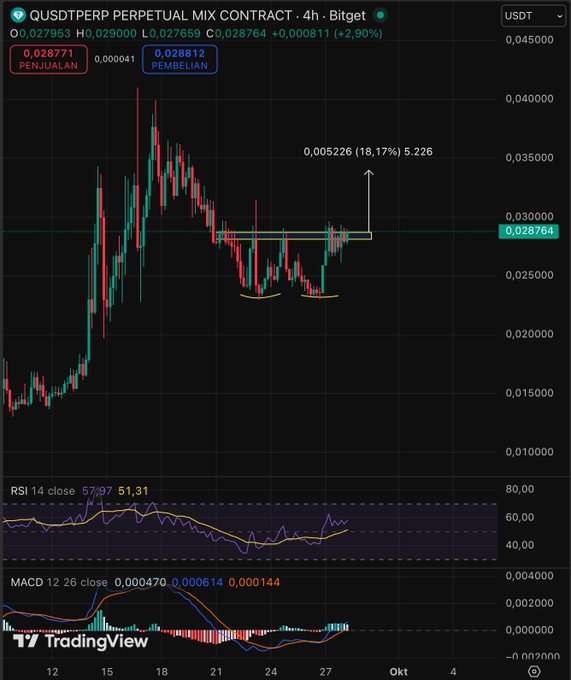


Carmelita
2025-09-28 11:12
⚡ $QUSDT en Préparation pour un Rebond ?
Disclaimer:Contains third-party content. Not financial advice.
See Terms and Conditions.
$HBAR/USDT reteste la ligne de cou du double bottom tout en s’enroulant dans un wedge descendant. Tant que ce support clé tient, la dynamique reste en faveur d’un reversal haussier.
🎯 Objectifs : TP1 : $0.27 TP2 : $0.30 TP3 : $0.34
Un breakout clair du wedge pourrait ouvrir la voie à une nouvelle jambe haussière.
👉 Gardez l’œil sur ce niveau : c’est souvent de là que partent les mouvements explosifs.
#HBAR #altcoins #cryptocurrency #blockchain #technical analysis
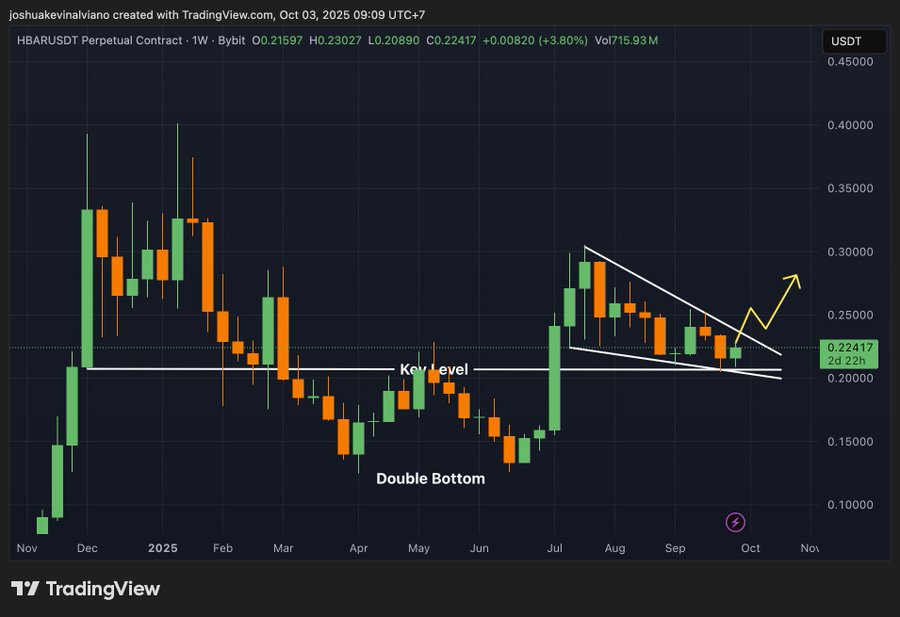


Carmelita
2025-10-03 07:24
🔥 $HBAR : Prêt à décoller ?
Disclaimer:Contains third-party content. Not financial advice.
See Terms and Conditions.
En seulement 7 jours, les entrées nettes sur $SEI/USDT ont doublé 🔥. Un signal clair : la rotation de capitaux s’accélère, la confiance grandit et la dynamique se renforce rapidement.
⚡ Quand les flux frais s’intensifient, c’est souvent le signe avant-coureur d’un mouvement de prix majeur. Les investisseurs ne suivent pas le bruit, ils suivent la liquidité.
$SEI/USDT comme un simple trade de momentum ou comme une vraie position long terme ?
#altcoins #CryptoMarkets #cryptocurrency #blockchain
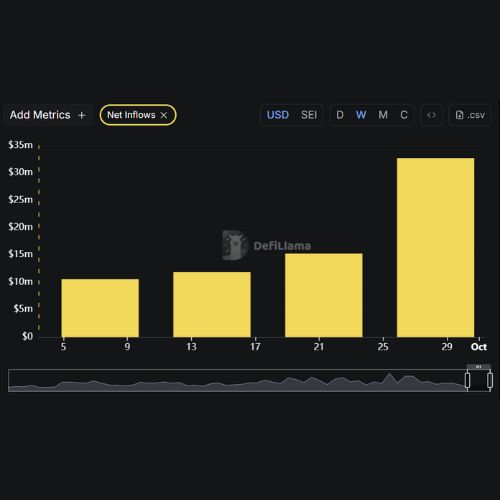


Carmelita
2025-10-01 14:31
📌 $SEI attire un afflux massif de capitaux
Disclaimer:Contains third-party content. Not financial advice.
See Terms and Conditions.
$SUI/USDT revient tester la borne basse de son canal et un niveau Fib majeur autour de 3,15 $ 📊.
👉 Tant que ce support tient, c’est une zone stratégique pour envisager de nouvelles entrées ✅.
⚙️ Plan de trade :
🛡️ Support à surveiller : 3,15 $
✅ Signal d’achat si rebond confirmé
❌ Invalidation si cassure et clôture nette en dessous
💡 $SUI/USDT reste l’un des projets L1 les plus actifs en termes de devs et d’écosystème. Entrer sur support permet d’optimiser le ratio risque/rendement et de se placer avant une potentielle reprise de tendance.
👉 On continue de suivre de près et on partagera les prochaines confirmations d’achat.
#Sui #altcoins #cryptocurrency #blockchain
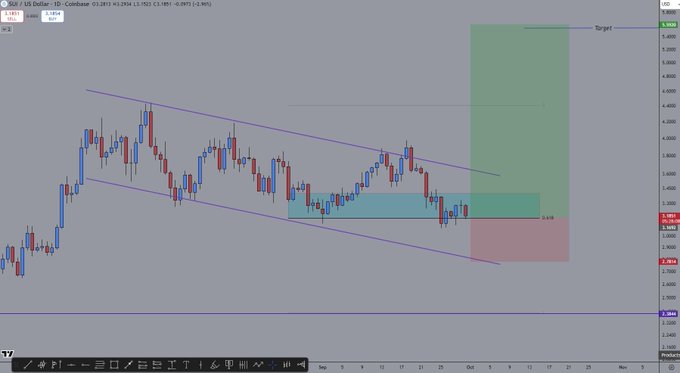


Carmelita
2025-09-30 22:15
$SUI – Retour sur zone clé de support
Disclaimer:Contains third-party content. Not financial advice.
See Terms and Conditions.